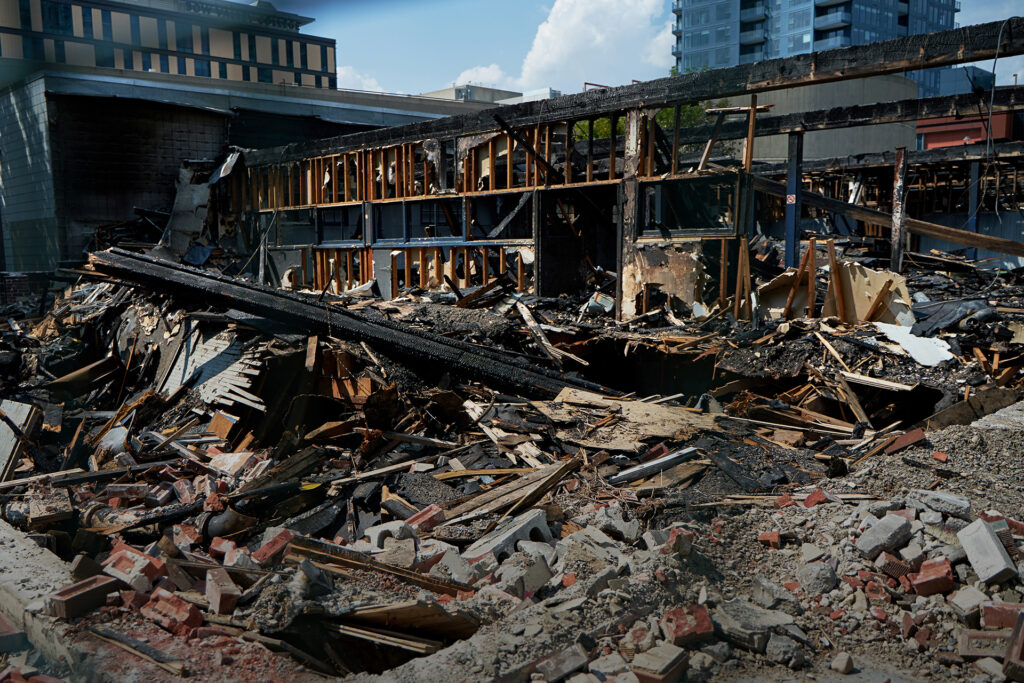Wildfire recovery is a race against time requiring accuracy
After a wildfire event, asset managers face the urgent task of assessing damage, coordinating inspections, initiating emergency repairs, and preparing insurance claims. For firms managing multiple properties across affected regions, this phase is logistically complex, time-sensitive, and high-stakes.
Crews must be dispatched to evaluate property conditions, document structural and landscape damage, confirm utility status, and secure partially impacted buildings. But in the chaotic aftermath of a fire, field teams are often navigating:
- Incomplete or outdated information
- Disrupted communication infrastructure
- Varied access restrictions
- Pressure to gather accurate data for insurance and liability reports
The rising cost of wildfires—and disorganized recovery
Wildfires are becoming one of the most destructive and expensive natural disasters in the U.S.::
- In 2024, wildfires burned over 2.8 million acres (roughly 40 times the area of New York City) and caused $12.5 billion in insured property losses, with the hardest-hit states including California, Oregon, Texas, and Colorado.
- The average cost per damaged property ranged from $215,000 to $250,000, and early 2025 has already seen $1.2 billion in additional wildfire-related losses.
- Insurance claims now take 35–50% longer to process after wildfires due to inconsistent inspections, missing documentation, and poor coordination during post-disaster recovery.
When multiple teams are deployed to multiple properties, instructions and documentation standards vary—slowing claims processing and increasing administrative overhead.
The Execution Gap
While asset managers often have post-event checklists and Standard Operating Procedures, the challenge lies in uniform execution across multiple sites and crews:
- Contractors may not know which areas to prioritize
- Inspectors may miss key zones or use inconsistent methods
- Property-specific instructions are buried in emails or spreadsheets
- On-the-ground workers may not have reliable access to centralized systems
These inconsistencies result in missed documentation, unverified site visits, and lost time during the most critical recovery phase.
Sig2 Smart Reminders make timing at scale possible
Sig2 enables asset managers to automate clear, location-specific audio instructions to teams on the ground, triggered the moment they arrive at a property.
Using geofenced messages, Sig2 delivers spoken guidance directly to mobile devices, helping inspection teams, vendors, or adjusters execute the right tasks in the right order—without needing printed packets, logins, or extra coordination.
“Begin assessment on the north side. Focus on exterior damage to HVAC units and fencing. Interior inspection approved if the structure is secure.”
“Document charred landscape along the south perimeter. Upload photos to the designated claims folder before departing.”
Whether it’s your own team or third-party vendors, everyone receives the same message—at the right place and time.
Operational benefits for Asset Managers
Sig2 Smart Reminders offer immediate advantages during wildfire recovery:
- Standardized inspection protocol across teams and regions
- Faster insurance documentation, with tasks performed and documented consistently
- Hands-free communication—updates and reminders while driving
- Dynamic updates—adjust instructions in real-time based on site access or emerging priorities
- Audit-ready trail of who received what message, when, and where
The Bottom Line
In the aftermath of wildfires, speed and accuracy determine how quickly you recover—and how much you recover.
With Sig2, asset managers gain control over fragmented post-disaster workflows. Properties become self-guided work zones that direct teams to act with clarity, consistency, and accountability.Wildfires are unpredictable. Your recovery process shouldn’t be. Sig2 Smart Reminders ensure every inspection starts right—automatically.
